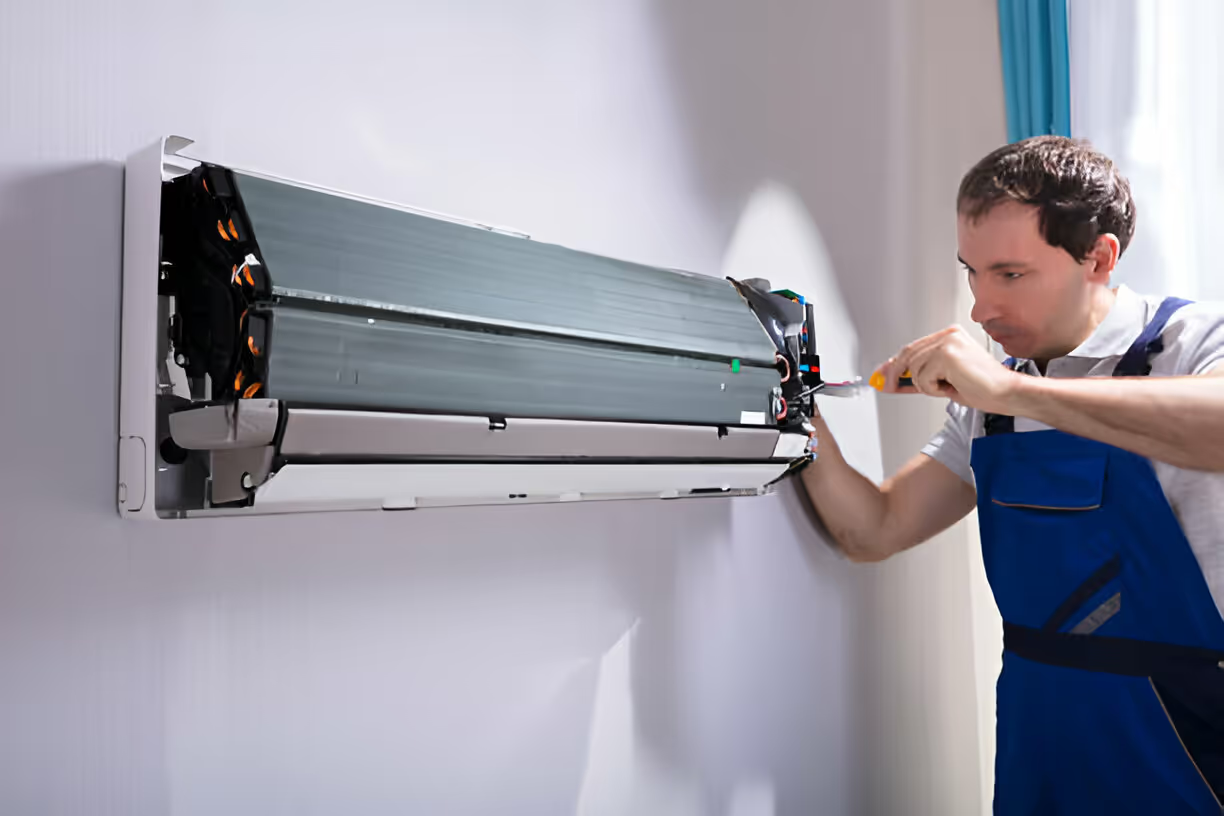Mini-Split Maintenance in Spring Hill, FL


Why routine mini-split maintenance matters in Spring Hill, FL
- Spring Hill’s humid subtropical climate accelerates coil fouling, mold growth, and corrosion on outdoor units exposed to salt and moisture.
- Higher annual cooling hours increase compressor and fan motor wear compared with northern climates.
- Regular inspections catch small refrigerant leaks and electrical issues before they become costly breakdowns.
- Maintenance improves indoor air quality by removing trapped pollen, dust, and mold spores from evaporator coils and filters—important for allergy-prone households.
Common mini-split maintenance issues in Spring Hill
- Dirty or clogged filters — reduces airflow, forces the system to work harder, and lowers indoor air quality.
- Fouled evaporator and condenser coils — reduces heat transfer efficiency and can cause icing or short cycling.
- Clogged condensate drains — leads to water backup, staining, or indoor leaks and may encourage mold growth.
- Low refrigerant or leaks — causes poor cooling performance and increased run times; in humid climates this often shows as longer run times and higher energy use.
- Corroded outdoor components — salt air and humidity can corrode fins, connections, and brackets.
- Electrical and control faults — failing capacitors, worn contactors, or loose connections can trigger intermittent operation or non-start conditions.
- Sensor and thermostat calibration issues — incorrect thermostat readings cause short cycling or uneven room temperatures.
What a professional mini-split maintenance visit includes
A standard maintenance inspection performed by a trained technician typically follows a consistent checklist to ensure reliability and efficiency:
- Initial system evaluation
- Visual inspection of indoor and outdoor units for obvious damage, corrosion, or debris.
- Verify model and system history if available to check for past repair trends.
- Airflow and filter service
- Remove, inspect, and clean or replace washable filters.
- Check blower wheel and indoor fan for dust buildup and clean if needed.
- Coil cleaning
- Clean evaporator and condenser coils using manufacturer-approved methods to restore heat transfer.
- Straighten bent fins and clear debris from outdoor unit airflow paths.
- Refrigerant and pressure checks
- Measure operating refrigerant pressures and temperatures to detect undercharge or leaks.
- Inspect visible refrigerant lines and fittings for oil residue or corrosion that indicate leaks.
- Electrical and control inspection
- Test capacitors, contactors, fuses, and wiring for proper operation and secure connections.
- Verify control board function, remote/thermostat communication, and safety switches.
- Drain and condensate system
- Clear and flush drain lines and pans to prevent backups and microbial growth.
- Check condensate pump operation where installed.
- Outdoor unit care
- Inspect and clean the outdoor coil, fan blades, and protective grille.
- Check mounting, vibration isolators, and any corrosion-prone hardware.
- Performance verification
- Measure temperature split (return vs. supply) and electrical consumption to confirm efficient operation.
- Run system through heating and cooling modes if applicable to ensure proper cycling.
Typical service time varies by system size and condition but generally ranges from one hour for a single head unit to longer for multi-zone systems.
Maintenance plans tailored for Spring Hill homes
Maintenance plans are structured to match homeowner needs and the local environment. Common plan tiers include:
- Basic Tune-Up: Annual inspection, filter cleaning, basic coil and drain check, and electrical safety inspection. Good for low-use systems or recent installations.
- Standard Seasonal Tune-Up: Two visits per year (pre-summer and pre-winter) that include full cleaning, refrigerant pressure check, controls test, and condensate maintenance—recommended for Spring Hill because of heavy cooling demand.
- Comprehensive Care: Quarterly or biannual visits that add advanced coil cleaning, corrosion-preventive treatments for outdoor components, prioritized scheduling for service, and extended diagnostics for multi-zone systems. Best for properties with high usage, allergy concerns, or coastal exposure.
Plans typically document each visit with findings and recommendations so warranty and service histories remain clear. Regular documented maintenance helps preserve manufacturer warranty coverage and can reduce the risk of unexpected failures.
How maintenance prevents costly repairs
- Identifying refrigerant leaks early prevents compressor failures and reduces energy waste.
- Cleaning coils and filters reduces run times, lowering energy bills and reducing premature motor wear.
- Clearing drains and treating mold-prone components avoids indoor air quality complaints and water damage.
- Tightening electrical connections and testing controls prevent intermittent faults that can lead to expensive part replacements.
Simple homeowner maintenance between professional visits
- Clean or rinse washable filters every 2–4 weeks during high-use months; disposable filters should be replaced per manufacturer guidance.
- Keep the outdoor unit clear of leaves, grass clippings, and storage items to maintain airflow.
- Ensure indoor unit spray or drain lines are free from visible blockages; watch for slow drains or water stains.
- Monitor system operation: note unusual noises, reduced cooling, or rapid cycling and schedule inspection if these occur.
Final considerations
For mini-split owners in Spring Hill, FL, professional, regular maintenance is not just about comfort—it preserves performance and reduces lifecycle cost in a climate that stresses HVAC equipment. Seasonal tune-ups, refrigerant checks, coil and filter care, and electrical inspections together form a maintenance strategy that keeps systems efficient and reliable year-round. Regular documentation of service also supports warranty requirements and creates a clear record that helps diagnose recurring problems quickly.
Service Areas


